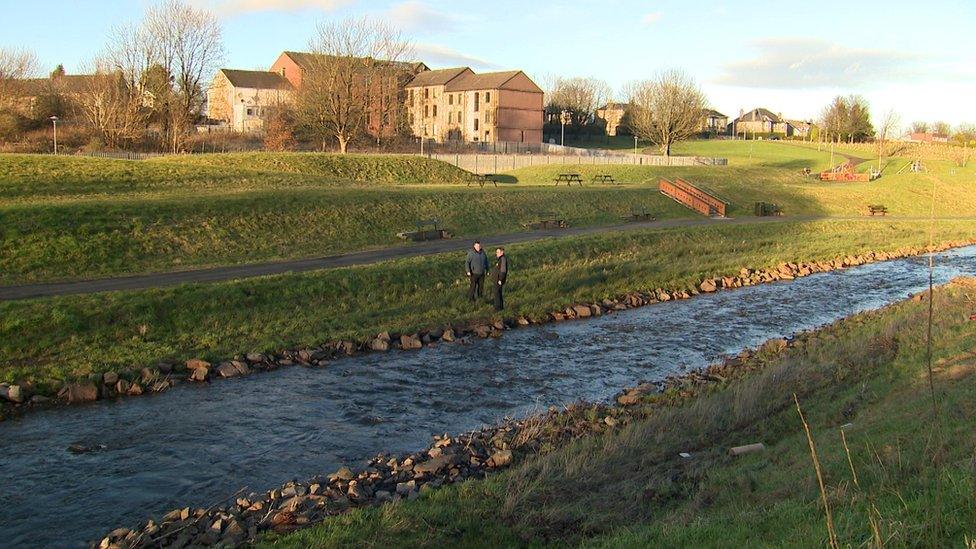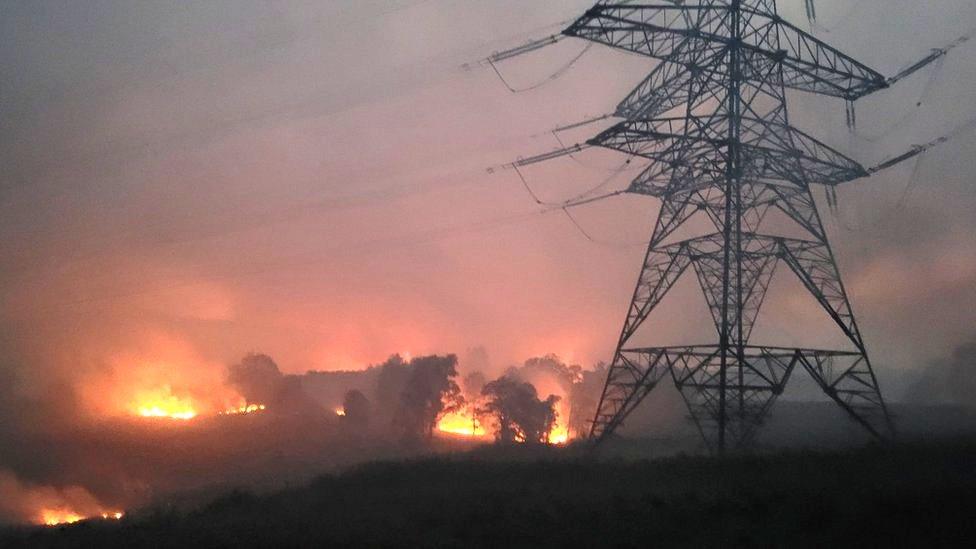The climate schemes providing family friendly spaces
- Published
- comments

The flood scheme has created a new great space for families to picnic
Ten-year-old Kyla loves to visit the local burn for picnics with her family.
The Levern Water in Barrhead, East Renfrewshire, has been regenerated by removing derelict buildings, creating a wild meadow and installing picnic tables.
But the £2.8m project is not just a local amenity. It has been built to create a flood plain and prevent properties being deluged by heavy rain.
Scottish ministers say it is the sort of project which is needed to protect against the impacts of climate change.
It is called blue-green infrastructure.
Using nature in this way is a key feature of the Scottish government's climate adaptation plan which lays out how the country will protect itself from the impacts of a warming planet.
It says heavy rainfall events are already happening more frequently while wildfires are longer lasting and difficult to control.

Levern Water has been rerouted with a new wetland area for flooding
Blue-green infrastructure projects, which use natural spaces to improve quality of life for local people while also providing environmental benefits, are being seen as an increasingly important solution.
Kyla said: "It was really bad but it's much better now. It's not as dirty as it used to be and all these new bits are really good for children.
"I always come here for a picnic with my family."
'We have to afford it'
The Carlibar Primary School pupil has been picked to show the Scottish government's Net-Zero Minister Mairi McAllan the work they have been doing to help create the new green space on the Levern Water beside their school.
Ms McAllan said: "It's vital that we support our communities to prepare resilience for the impacts of climate change that are already here."
She urged people to engage with a consultation on the priorities for dealing with climate impacts, which range from coastal defences to better water management over dryer summers.
All these things are expensive but the minister added: "We have to afford it."
Ms McAllan admitted that as well as public money investment will also be required from private companies and individuals.

A wildfire at Cannich in the Highlands burned for weeks
The plan says firms must prepare for lost time to protect outdoor workers from heat stress during spells of particularly warm weather.
It adds trees, rain gardens and green roofs will be needed to keep people, outdoor spaces and buildings cooler during heatwaves.
And it calls for the creation of local action plans to make communities more resilient against flooding.
The document also reveals that over the past decade, the Scottish Fire and Rescue Service has dealt with an average of 180 wild fires a year, many of which threatened infrastructure, property and life.
Although the number has only been rising slightly, the fires are burning for longer and are more challenging for firefighters.